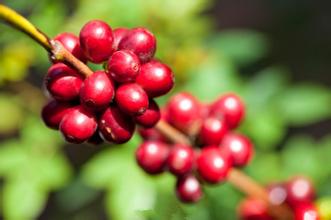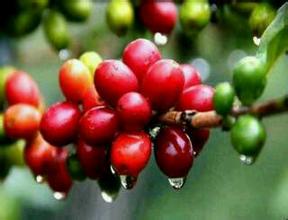A brief introduction to the characteristics of Nicaraguan coffee beans by grinding scale flavor description varieties
A brief introduction to the characteristics of Nicaraguan coffee beans by grinding scale flavor description varieties
The Great Wall of Nicaragua is located 150 kilometers west of Managua, the capital of Nicaragua. It was originally a boundary stone for the land among Indian tribes. At the same time, it also has certain defense functions, with a total length of 40 kilometers.
Coffee is Nicaragua's main export. According to the president of the Nicaraguan Coffee Farmers' Federation, due to the poor harvest of coffee in Nicaragua's Pacific region, the country's total coffee production in 1998 may be 12% lower than that in 1997. 1997, 1998 Coffee year
Nicaragua harvested a total of 1.422 million bags (each 46kg) of coffee, the best harvest after 14 years of coffee production hovering around 1 million bags. It is estimated that the income from coffee exports in 1998 will be about 1.6 billion US dollars, and Nicaraguan coffee production will drop sharply. Wei Kailei coffee is Nicaragua's main export product. According to the president of the Nicaraguan Coffee Farmers' Federation, due to the poor harvest of coffee in Nicaragua's Pacific region, the country's total coffee production in 1998 may be 12% lower than that in 1997 and 1998.
Nicaraguan coffee, grown in the north and middle of the country. Coffee is a pillar industry in Nicaragua, producing nearly 100,000 tons of coffee beans every year. Many people who have tasted Nicaraguan coffee usually think that it is no different from Salvadoran coffee or Honduran coffee. It has a rich aroma, smooth and delicate, and a slightly bitter finish, like a faint taste in wine.
Madriz alpine bean is an ecological coffee with a very hard shell. In a pure natural growing environment, it uses more complex operations to maintain the delicate aroma and taste of the coffee. It comes from between Matagalpa and Jinotega in northern Nicaragua.

Important Notice :
前街咖啡 FrontStreet Coffee has moved to new addredd:
FrontStreet Coffee Address: 315,Donghua East Road,GuangZhou
Tel:020 38364473
- Prev

Flavor description of Brazilian coffee beans, a big coffee producer, introduction to the origin of yellow bourbon varieties
Brazil is vividly compared to the giant and monarch of the coffee world. There are about 3.97 billion coffee trees there, and small farmers now grow 75% of Brazil's total coffee production. The number of coffee producers in Brazil is twice or even three times that of Colombia, which is the second largest coffee producer in the world. Other types of Brazilian coffee, such as Rio and Parana, are not needed.
- Next

Flavor description of Indonesian Mantenin Coffee beans with strong aroma
Flavor description of Indonesian Mantenin Coffee beans A brief introduction to the processing process and Sumatran characteristics of the varieties. I describe these treatments in such detail because it is not clear how the soil and atmosphere and the unusual treatment techniques and the three-stage drying each affect the formation of the characteristics of Lindong and Manning coffee. Only one thing is certain.
Related
- Detailed explanation of Jadeite planting Land in Panamanian Jadeite Manor introduction to the grading system of Jadeite competitive bidding, Red bid, Green bid and Rose Summer
- Story of Coffee planting in Brenka region of Costa Rica Stonehenge Manor anaerobic heavy honey treatment of flavor mouth
- What's on the barrel of Blue Mountain Coffee beans?
- Can American coffee also pull flowers? How to use hot American style to pull out a good-looking pattern?
- Can you make a cold extract with coffee beans? What is the right proportion for cold-extracted coffee formula?
- Indonesian PWN Gold Mandrine Coffee Origin Features Flavor How to Chong? Mandolin coffee is American.
- A brief introduction to the flavor characteristics of Brazilian yellow bourbon coffee beans
- What is the effect of different water quality on the flavor of cold-extracted coffee? What kind of water is best for brewing coffee?
- Why do you think of Rose Summer whenever you mention Panamanian coffee?
- Introduction to the characteristics of authentic blue mountain coffee bean producing areas? What is the CIB Coffee Authority in Jamaica?

